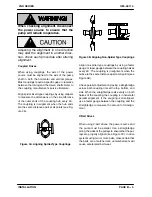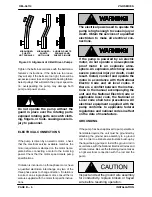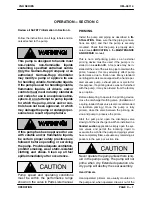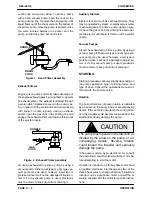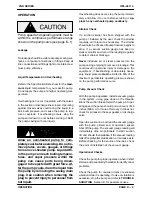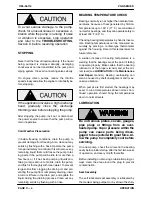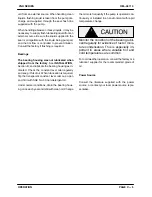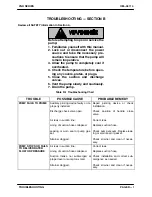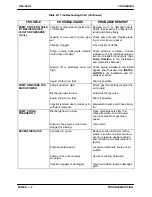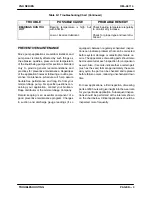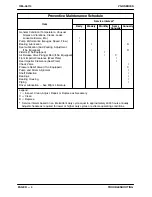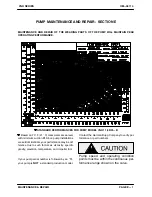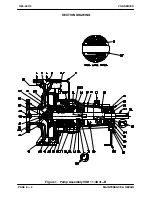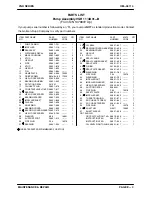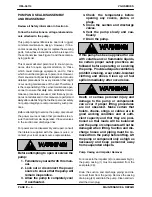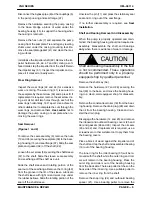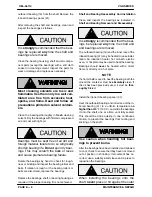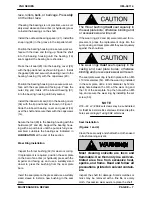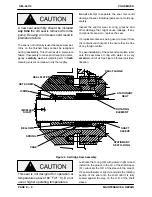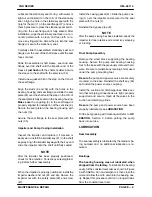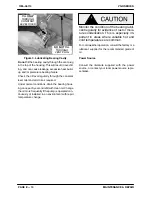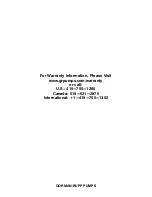
VGH SERIES
OM-06114
MAINTENANCE & REPAIR
PAGE E - 4
PUMP AND SEAL DISASSEMBLY
AND REASSEMBLY
Review all Safety information in Section A.
Follow the instructions on all tags, label and de
cals attached to the pump.
This pump requires little service due to its rugged,
minimum‐maintenance design. However, if it be
comes necessary to inspect or replace the wearing
parts, follow these instructions which are keyed to
the sectional view (see Figure 1) and the accompa
nying parts list.
This manual will alert personnel to known proce
dures which require special attention, to those
which could damage equipment, and to those
which could be dangerous to personnel. However,
this manual cannot possibly anticipate and provide
detailed precautions for every situation that might
occur during maintenance of the unit. Therefore, it
is the responsibility of the owner/maintenance per
sonnel to ensure that
only
safe, established main
tenance procedures are used, and that any proce
dures not addressed in this manual are performed
only
after establishing that neither personal safety
nor pump integrity are compromised by such prac
tices.
Before attempting to service the pump, disconnect
the power source or take other precautions to en
sure that it will remain inoperative. Close all valves
in the suction and discharge lines.
For power source disassembly and repair, consult
the literature supplied with the power source, or
contact your local power source representative.
Before attempting to open or service the
pump:
1. Familiarize yourself with this man
ual.
2. Lock out or disconnect the power
source to ensure that the pump will
remain inoperative.
3. Allow the pump to completely cool
if overheated.
4. Check the temperature before
opening any covers, plates, or
plugs.
5. Close the suction and discharge
valves.
6. Vent the pump slowly and cau
tiously.
7. Drain the pump.
If this pump has been approved for use
with volatile and/or flammable liquids,
be certain proper safety practices are
followed before operating or servicing
the pump. Provide adequate ventilation,
prohibit smoking, wear static‐resistant
clothing and shoes. Clean up all fuel
spills immediately after occurrence.
Death or serious personal injury and
damage to the pump or components
can occur if proper lifting procedures
are not observed. Make certain that
hoists, chains, slings or cables are in
good working condition and of suffi
cient capacity and that they are posi
tioned so that loads will be balanced
and the pump or components will not be
damaged when lifting. Suction and dis
charge hoses and piping must be re
moved from the pump before lifting. Lift
the pump or component only as high as
necessary and keep personnel away
from suspended objects.
Pump Casing and Impeller Removal
For access to the impeller (2) or seal assembly (3),
the pump casing (1) must be separated from the
seal plate (39).
Drain the suction and discharge piping and dis
connect them from the pump. Remove the casing
drain plug (43) and drain the pump. Clean and rein
stall the drain plug.

